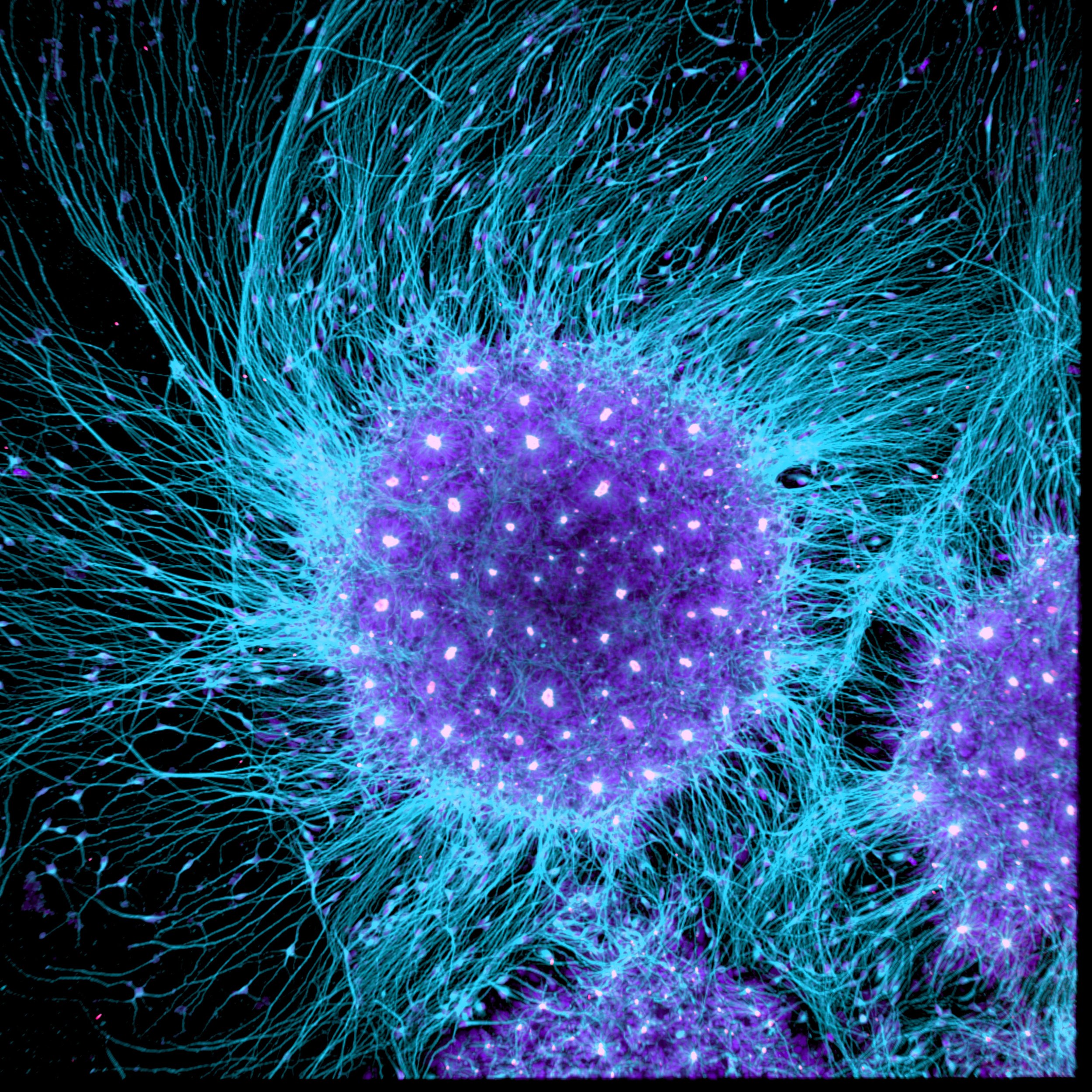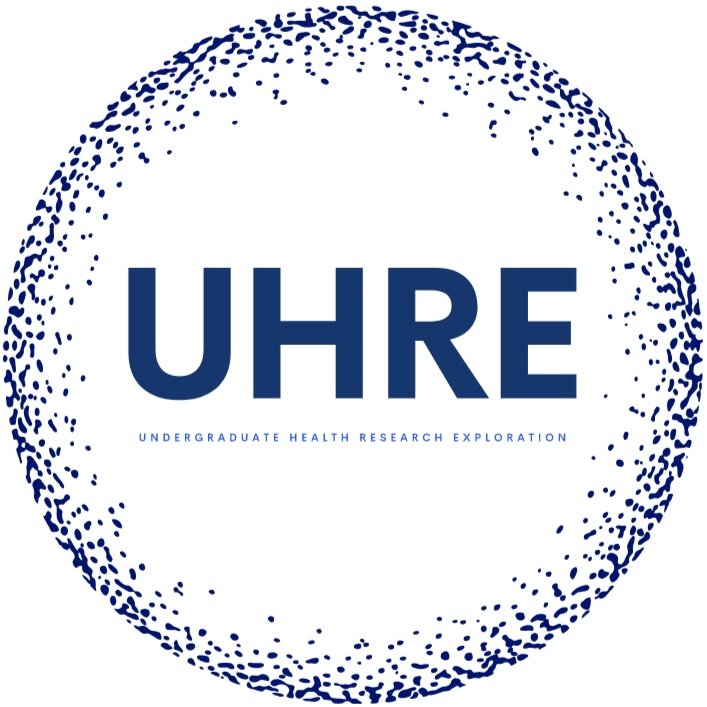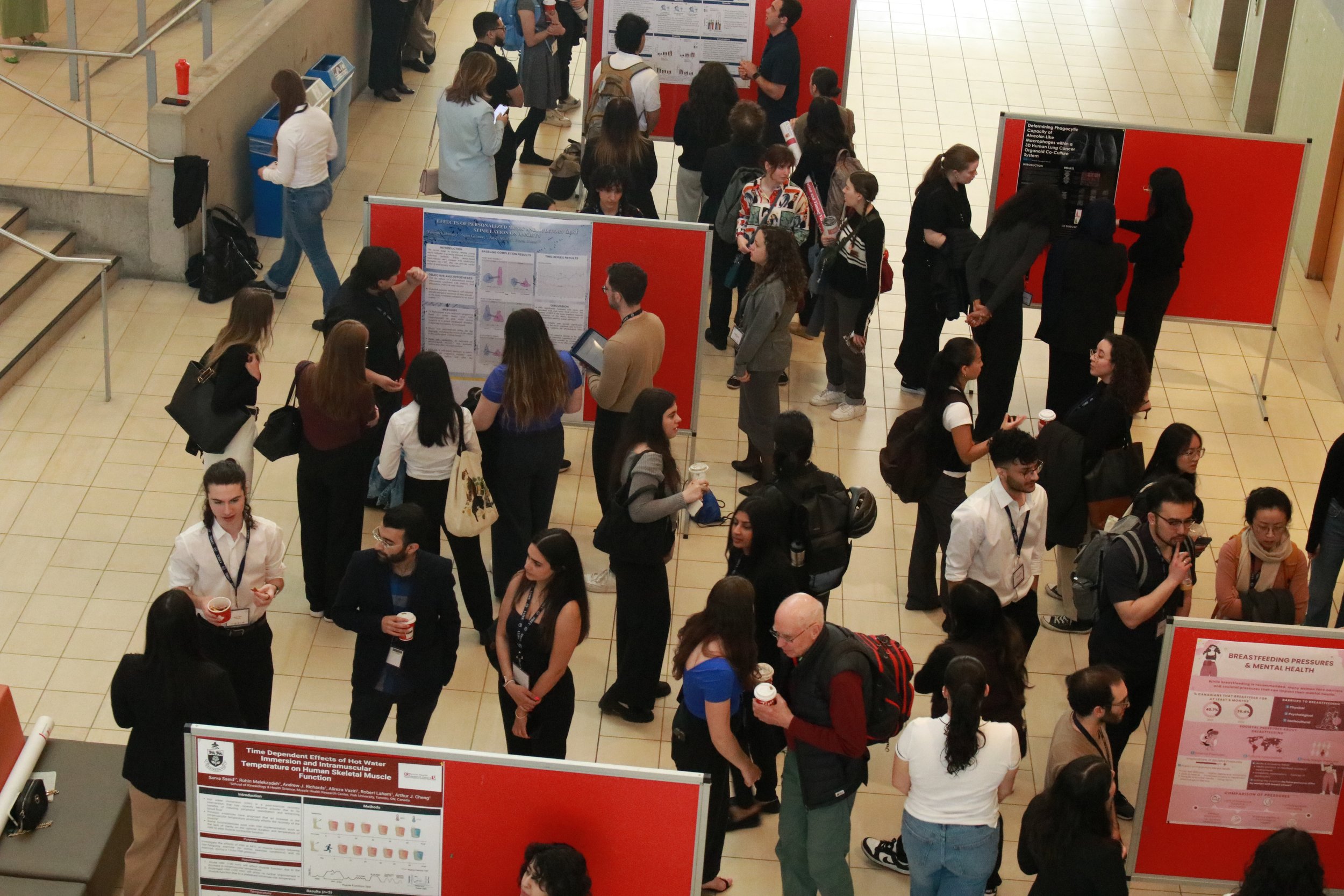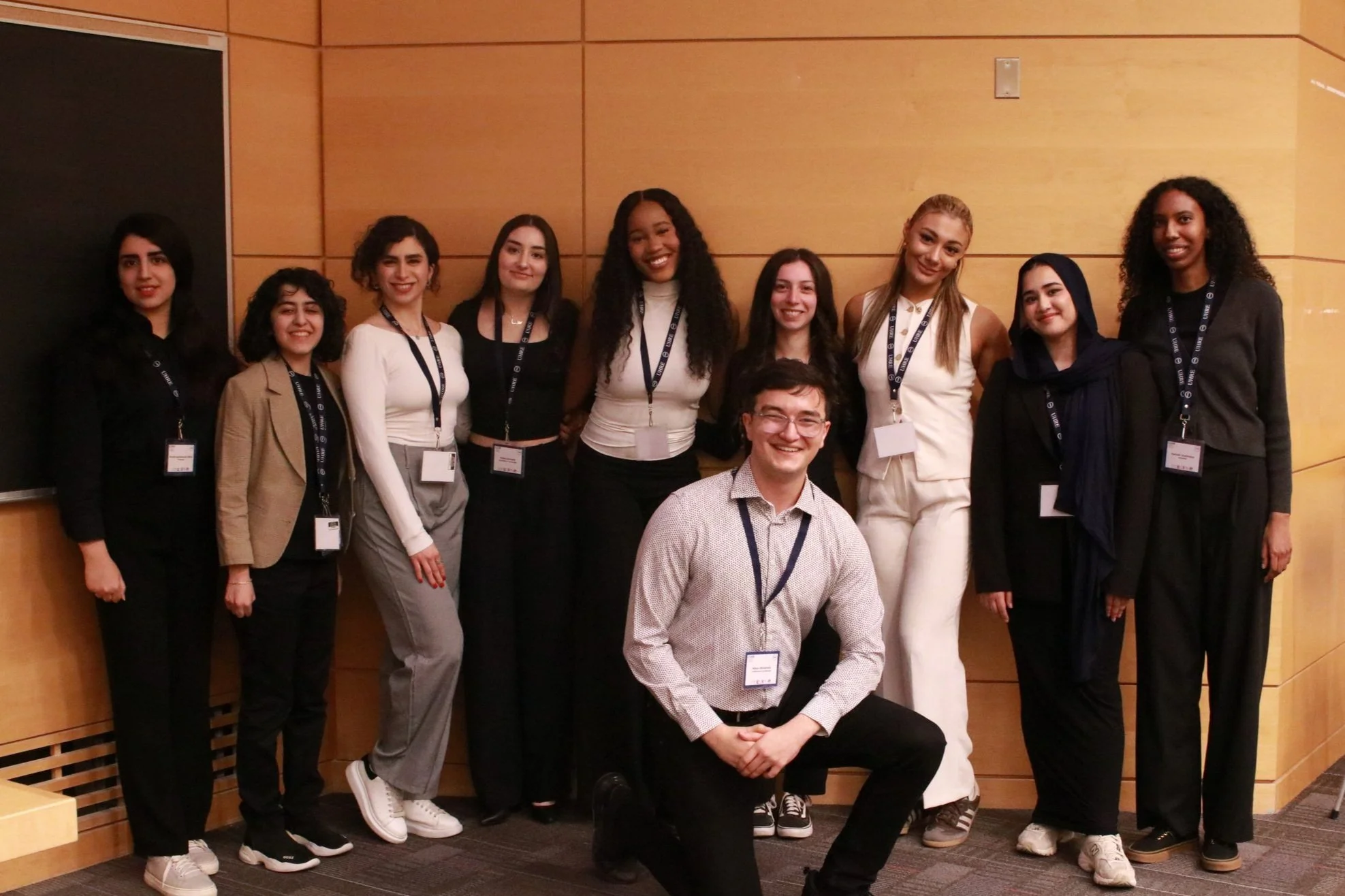
The Conference for Undergraduate Health Research (CUHR) 2025
Canada’s first Health-Focused undergraduate research conference.
CUHR 2025 Conference Theme: From Discovery to Delivery: Transforming Ideas into Impact
On May 9, 2025, UHRE held its fourth annual Conference for Undergraduate Health Research (CUHR), with over 80 presenters from over 15 institutions.
This year's Undergraduate Research Conference at York University was an inspiring celebration of academic exploration and innovation. The vibrant event brought together brilliant minds from across the globe and within our own university, offering a dynamic platform for undergraduate students to showcase their pioneering research.
The atmosphere buzzed with energy as participants from a wide range of disciplines presented their work, sparking thought-provoking discussions and nurturing a spirit of collaborative discovery. The conference served as a hub of intellectual exchange, where students shared insights, challenged ideas, and built meaningful connections that transcended borders.
Highlighting the impressive scope and depth of undergraduate research, the event proved that creativity and curiosity know no bounds. From cutting-edge scientific advances to socially engaged projects, each presentation reflected the passion and drive of the next generation of innovators and scholars.
Conference Awards
-
Valued at $500, and will be awarded to a CUHR presenter whose research and presentation are exceptional and address issues/topics related to health equity.
The winner of the Faculty of Health Dean’s Excellence Award for Research in Health was Rand Amer
You can find their abstract below:
Presenter: Rand Amer
Co-Authors: Joshua Cherubini, Maureen MacDonald
Title: Effects of Sleep Duration and Timing Variability on Endothelial Function in Healthy Young Adults
Abstract: Intra-individual variations in the timing and duration of sleep, and a diurnal preference for evening wakefulness, associate with a variety of indices of cardiometabolic dysregulation. Research also suggests that irregular sleep-wake patterns contribute to reduced endothelial function, which represents a critical determinant of cardiovascular health. Thus, an individual’s sleep-wake cycle, which may be influenced by chronotypical preference for morning or evening activity, may modulate endothelial function. There exist current gaps in the understanding of interactions between habitual sleep duration variability, chronotype, and endothelial function. This study aims to examine the impact of sleep duration variability on endothelial function in healthy young adults and assess the potential moderating role of chronotype. Healthy young adults, aged 18 to 35 (n=23; 17F, 6M), completed the Munich Chronotype Questionnaire (MCTQ) to determine their chronotype. Habitual sleep patterns were assessed over seven days of normal sleep. Habitual sleep duration variability was defined as the standard deviation of total sleep duration across the seven days, recorded both subjectively using a consensus sleep diary and objectively using a Polar M430 accelerometer. Endothelial function was estimated by measuring flow-mediated dilation of the brachial artery (BA FMD) assessed via ultrasonography. Linear regression analysis revealed no significant association between sleep variability and BA FMD. Additionally, chronotype did not significantly influence the interaction between sleep variability and BA FMD. Elucidating the effects of sleep variability on endothelial function will provide a deeper understanding of how circadian rhythms influence cardiovascular function. By examining the role of sleep regularity, this study could inform potential interventions aimed at preserving cardiovascular health.
-
Valued at $500, and will be awarded to a CUHR presenter whose research and presentation are exceptional and involve collaborations between at least 2 different researchers and/or institutions/organizations from different disciplines.
The winner of the Faculty of Health Dean’s Excellence Award for Interdisciplinary Collaborations was Amy Yan.
You can find their abstract below:
Presenter: Amy Yan
Co-Authors: Anushka Ataullahjan, Shaun Morris, Pierre Philippe, Piché-Renaud
Title: “Through a Parent’s Eyes: Trust, Transparency, and the Search for Health Facts During COVID-19”
Abstract: The COVID-19 pandemic placed parents in a position of making critical decisions regarding their children’s health, often amid an overwhelming amount of information. Understanding the factors influencing parents’ decision-making processes is essential for informing future public health policies and support mechanisms for families. The study specifically aimed to investigate the trusted news sources parents relied on regarding the COVID-19 pandemic, with a particular focus on vaccine-related resources. It examined how these sources were determined and the ways they influenced parental decisions. Methods: The research utilizes qualitative data collected through eight focus group discussions and one-on-one interview with parents of children aged 5-11, conducted between July 2022 and February 2023. Thematic analysis was employed to identify key themes in how parents assessed the trustworthiness of information and the sources they relied upon. Findings reveal that familiarity with information sources, particularly healthcare providers and personal networks, played a crucial role in shaping trust. Additionally parents emphasized the importance of evidence-based data and transparency, while also expressing significant distrust toward messaging they perceived as politicized. Conclusions: The results suggest that transparent, evidence-based communication from trusted sources is critical in fostering confidence during health crises. The study highlights the need for improved public health messaging strategies, particularly around scientific literacy, transparency, and avoiding the perception of political influence, to build trust and support informed decision-making among parents in future health emergencies.
-
Valued at $500, this award will be presented to a CUHR presenter who demonstrates exceptional promise as an emerging researcher. The candidate must be a current undergraduate student enrolled in the Faculty of Health. Open to CUHR presenters regardless of experience level, this award recognizes curiosity, dedication, and the potential for future contributions to the field of health research.
The winner of the Faculty of Health Rising Researcher Award was Nicole Benayguev.
You can find their abstract below:
Presenter: Nicole Benayguev
Co-Authors: Sabrina Champsi, David A. Hood
Title: Evaluating Late-Passage C2C12 Myotubes as a Model for Aging Skeletal Muscle and the Role of Nutraceutical Intervention
Abstract: Sarcopenia is characterized by an age-related decline of muscle mass and function and is a condition that is a major concern for the aging population. Age-related factors that contribute to sarcopenia include mitochondrial dysfunction, oxidative stress, and cellular senescence. To better understand these complex processes, reliable in vitro models that recapitulate skeletal muscle aging are needed. However, the availability of established cellular models remains limited. This study aimed to determine whether late-passage (LP) C2C12 myotubes (MTs) represent a viable in vitro model to investigate the molecular basis of muscle aging. Once this model was established, we evaluated the potential of Sulforaphane (SFN), a nutraceutical known to activate the nuclear factor erythroid 2-related factor 2 antioxidant response element (Nrf-2-ARE) pathway, to ameliorate age-related increases in oxidative stress. Early and LP MTs exhibited reduced morphological differentiation, indicated by decreased myotube width and length. Protein expression was analyzed through immunoblotting, which demonstrated a 1.5-fold increase in the senescence-related marker p21 (cyclin-dependent kinase inhibitor 1). Mitochondrial biogenesis was also reduced, depicted by a 61% reduction in mitochondrial transcription factor A (TFAM), which mediates mtDNA transcription and translation, and a 53% decrease in UQCRC2, a component of the electron transport chain. LP MTs demonstrated a marked reduction in Nrf-2 and an increase in Kelch-like ECH-associated protein 1 (Keap-1), a negative regulator of Nrf-2 action. Downstream antioxidant marker NADPH quinone oxidoreductase 1 (NQO1) was also diminished, demonstrating a reduction in antioxidant activity. Despite a decrease in antioxidant signaling, a 25% increase in Catalase expression was detected, suggesting the presence of other regulatory mechanisms at work. SFN treatment restored the reduction in mitochondrial content and perturbations in antioxidant signaling in LP cells, indicating a positive role for this nutraceutical in our in vitro model of aging skeletal muscle.
-
Valued at $350, and supported by the founding dean of the Faculty of Health at York University, Dr. Harvey Skinner, the Harvey Skinner Research Impact Award is awarded to the student whose work best exemplifies the theme “Agents of Change”. Students who have used their research as an inspiration to create initiatives or contribute to their community are best eligible for this award. This award is open to all students, and we give presenters the opportunity to share how their work has had a positive impact!
The winner of the Harvey Skinner Research Impact Award was Alyssa-Marie Prassinos.
You can find their abstract below:
Presenter: Alyssa-Marie Prassinos
Co-Authors: Yasaman Kambari, Antonietta Mandatori, Achala Rodrigo
Title: Perceptions of Artificial Intelligence Use in Mental Health Applications
Abstract: Artificial Intelligence (AI) is becoming increasingly integrated into various aspects of day-to-day life. Within this context, AI is becoming a popular tool for increasing efficiency and accuracy within healthcare systems, including various aspects of mental health services (e.g., diagnosis, treatment, and monitoring). As such, understanding public perceptions regarding the use of AI-based technology in mental health services is an important requisite for developing more accessible, accepted and successful mental health focused applications. While researchers have begun to explore public perception of AI use in mental health settings, the Canadian perspective on this matter remains to be explored. Therefore, using an online survey advertised to Canadian adults across various social media platforms, this study aims to explore perceptions of AI use in mental health services, specifically regarding the likelihood of its adoption across applications supporting diagnosis, treatment and symptom monitoring. The study also explores the potential associations between the likelihood of adopting AI-based applications and individual differences across demographic (e.g., gender, age, race, etc.) and personality (e.g., neuroticism and openness) factors. It is hypothesized that Canadians will be less likely to adopt to AI-based applications in the context of mental health in comparison to other settings (e.g., fitness, education, finances, etc.). It is also hypothesized that personality traits and demographic factors will demonstrate important patterns of association with the likelihood of adopting AI-based mental health tools. Results will be discussed with a focus on optimal implementation of AI-based tools within the Canadian mental health context.
-
Based in the Faculty of Health at York University, the Muscle Health Research Centre (MHRC) provides a centralized and focused research emphasis on the importance of skeletal muscle to the overall health and well-being of Canadians. The MHRC provides an excellent training environment for undergraduate and graduate students including opportunities for collaboration between diverse laboratories and many networking activities.
Valued at $250, the Muscle Health Research Centre's Award for Excellence in Physiology is awarded to a CUHR presenter whose research pushes the boundaries of basic physiological science or advances the translation of physiological research findings into practice.
The winner of the Muscle Health Research Centre's Award for Excellence in Physiology was David Castro.
You can find their abstract below:
Presenter: David Castro
Co-Authors: Daniel Sheffield, Janessa D M Drake
Title: The Relationship Between the Active Hip Abduction Test, Lumbopelvic Control, and Landing Biomechanics
Abstract: Lumbopelvic control (LPC) is crucial for athletic performance and injury prevention, ensuring stability and coordination of the lumbar spine and pelvis during dynamic tasks like jumping and landing. Poor LPC can lead to compensatory patterns such as dynamic knee valgus, excessive foot pronation, and lateral pelvic tilt, increasing injury risk. The Active Hip Abduction (AHAbd) test is a clinical tool for assessing LPC, but its relationship with landing biomechanics remains unclear. This study examines the connection between AHAbd test performance and lateral pelvic tilt in the frontal plane during landing in university-aged individuals (18-30 years). By evaluating the AHAbd test’s predictive validity for LPC in high- impact activities, this research aims to identify individuals needing targeted interventions to reduce injury risk. Fifteen participants completed the AHAbd test to assess their ability to abduct the hip while maintaining pelvic stability. They then performed a bilateral countermovement jump (CMJ) to bilateral landing and a CMJ to unilateral landing. Three-dimensional motion capture using Open Cap analyzed changes in lateral pelvic tilt. Statistical analysis examined correlations between AHAbd test scores and landing biomechanics. Preliminary results indicate no significant association between AHAbd test scores and pelvic angle changes in the frontal plane during landing (p < 0.05). This suggests the AHAbd test is not a useful screening tool for identifying individuals at risk of this specific LPC deficiency. Our findings highlight the limitations of non-dynamic LPC assessments like the AHAbd test in predicting movement deficiencies in landing tasks. Further research is needed to develop valid tests for dynamic LPC assessment. This study contributes to sports medicine and rehabilitation, supporting evidence-based screening methods to enhance injury prevention and athlete development.
-
Valued at $200, and awarded to a CUHR presenter who demonstrates research excellence in the field of hematologic disorders or issues/topics related to blood.
The winner of the York University’s Blood Initiative Research Award for Hematologic Excellence was Kate Dunsmore.
You can find their abstract below:Presenter: Kate Dunsmore
Co-Authors: Michelle (Yixue) Mei, Emily Ledgerwood, Julia Patelli, Baraa Al-Khazraji
Title: The influence of the magnitude of change of estradiol and progesterone throughout the menstrual cycle on the cerebrovascular reactivity of young healthy females
Abstract: Circulating levels of estradiol and progesterone are highly variable between naturally cycling premenopausal females, even when matched for menstrual phase. Previous research indicates a modulatory effect of estradiol and progesterone on cerebral blood flow and cerebrovascular reactivity (CVR) - a measure of change in cerebral blood flow in response to vasoactive stimuli, such as CO2. High levels of circulating estradiol during the early follicular phase have been associated with vasodilation and increased CVR. While high progesterone during the midluteal phase counteracts these effects, promoting vasoconstriction and decreasing CVR. This study builds on these findings and aims to understand the effects of varying magnitudes of hormone fluctuations on CVR of individual females. Methods: Females attended data collection during the early follicular and midluteal phases of a single menstrual cycle. Blood samples were collected from the antecubital vein to measure circulating hormone levels. While in a supine position, CVR was assessed in the middle cerebral artery during a staged hypercapnic protocol during which participants breathed +3, +6, and +9 mmHg of CO2 gas above baseline for five minutes each. Changes in blood velocity in the middle cerebral artery were recorded with transcranial doppler ultrasound imaging. Results: 11 participants (age: 20.5±1.58, mean ± SD) have completed the study. Linear regression models did not reveal any significant influence of the concentration of estradiol (p=0.542), progesterone (p=0.185), or both hormones together (estradiol p=0.897, progesterone p=0.250) on CVR. Discussion: The lack of significant correlation between hormone levels and CVR aligns with previous research. The high variability among the participants’ response to CO2 gas may indicate the involvement of factors beyond hormone level in modulating CVR. This study highlights the considerable variation in the physiological responses of females, reinforcing the need for further research into women’s health.
-
Valued at $100, and will be awarded to a CUHR presenter whose research heavily emphasized and demonstrated translating basic science knowledge into practical applications.
The winner of the LaMarch Centre Award for Excellence in Child and Youth Research was Jennifer Bromberg
You can find their abstract below:
Presenter: Jennifer Bromberg
Co-Authors: Andrea Emberly
Title: Youth’s Experiences Navigating Friendships
Abstract: Research has found that friendships can be linked with youth wellbeing. Research studies have used quantitative methods, but few use qualitative methods to deeply understand the nuances of youth experiences. To understand youth's experiences navigating friendships in high school through participatory hands-on methods, allowing youth with various needs to participate. My research study examines the experiences of youth ages 14-17 (n = 7) navigating friendships in high school. My study uses arts-based participatory research methods, consisting of drawing sessions and photovoice, where participants were given a prompt about their friendships and asked to submit photographs. Focus groups collected verbal data. My research is grounded in developmental theories: social constructionism and symbolic interactionism in order to gather youth centric data. Data was inductively thematically coded. Three main themes were identified: trust/loyalty, ethnicity/religion and toxicity. Trust/loyalty emerged as essential factors in forming close bonds and when determining who a youth refers to as their best friends. Ethnicity/religion influenced friendships, particularly in smaller schools where social groups often formed around shared cultural or religious identities. Participants brought up toxicity, such as exclusion, as a challenge in friendships, tied to wellbeing.
-
Valued at $100, and will be awarded to a CUHR presenter whose research heavily emphasized and demonstrated translating basic science knowledge into practical applications.
The winner of the Canadian Blood Services Award for Distinction in Translational Research was Emily Ledgerwood.
You can find their abstract below:
Presenter: Emily Ledgerwood
Co-Authors: Michelle Mei, Kate Dunsmore, Julia Patelli, Baraa Al-Khazraji
Title: Investigating the effects of menstrual cycle phase and oral contraceptive pill (OCPs) use on cerebrovascular reactivity (CVR)
Abstract: The brain’s high metabolic demands require tight regulation of cerebral blood flow (CBF) to ensure adequate oxygen and nutrient delivery. Cerebrovascular reactivity (CVR) reflects the ability of the brain’s vasculature to modulate blood flow in response to physiological and metabolic changes, making it a critical measure of cerebrovascular function. Hormones affect vascular function, yet it remains unknown how cyclic endogenous hormones (estrogen and progesterone) over the menstrual cycle and synthetic hormones (ethinyl estradiol and levonorgestrel) during phases of the oral contraceptive pill cycle affect cerebrovascular function. This study aimed to investigate the effects of menstrual cycle phase and second-generation OCP use on CVR by examining hemodynamic responses in the internal carotid artery (ICA) and middle cerebral artery (MCA) to a hypercapnic (elevated CO2) protocol. Participants included young, healthy, naturally cycling women, and women using second-generation OCPs. Data were collected from women during two distinct phases of the menstrual or pill cycle, respectively: the early follicular phase and the mid-luteal phase and placebo and active pill phase. The study aimed to advance our understanding of the influence of menstrual cycle phase and OCP use in modulating cerebrovascular function, with results expected to provide new insights on cerebrovascular health in women and potentially inform clinical decisions regarding menstrual cycle regulation and OCP use.
-
Valued at $100 and presented to a CUHR participant who exemplifies exceptional scientific communication. The recipient must be currently enrolled in a degree program within the Faculty of Science.
The winner of the York University Book Store's Award for Excellence in Research Communication was Chau Nguyen.
You can find their abstract below:
Presenter: Chau Nguyen
Co-Authors: Esther Greenglass
Title: Predictors of Recorded Behaviours that Prevent COVID-19
Abstract: Considerable research has identified certain behaviours that may protect individuals from getting infected by the COVID-19 virus. This study systematically examined factors that predict these preventive behaviours during the COVID-19 pandemic. Specifically, the study assessed predictors of the mean reported frequency of nine preventive behaviours: wearing masks or gloves, hand washing, using hand sanitizer, maintaining a balanced diet, exercising regularly, getting sufficient sleep, taking vitamins, and monitoring coronavirus symptoms online. Participants were 730 adults from five countries (Canada, the United States, Italy, Germany, and the United Kingdom), recruited through Amazon's Mechanical Turk (MTurk) who anonymously completed an online questionnaire. On average, participants were aged 32.50 years old (SD = 10.34), 35% (N = 256) of whom were female. A multiple linear regression analysis was conducted to analyze the relationship between the means of different predictors and recorded preventive behaviours controlling for two demographic variables (age and gender). Results of the regression analysis showed that six factors significantly accounted for 38% of the variance in preventive behaviours. Specifically, greater self-monitoring of coronavirus symptoms, social support, use of active coping, use of positive reframing, avoidance of large gatherings, and COVID-19-related anxiety were significantly associated with increased preventive behaviours. Implications of the findings are discussed.
Photos
Subscribe for Updates
Questions?
Contact us at uhreyorku@gmail.com or through the Contact page on our website for any questions about CUHR, or the Undergraduate Health Research Exploration program.






